Last Chance to Catch NYC's Holiday Notalgia Train
We met the voices of the NYC subway on our nostalgia ride this weekend!


Have you heard of a “Forever Wild” nature preserve? It’s an initiative of New York City Parks, “to protect and preserve the most ecologically valuable lands within the five boroughs,” according to the department. New York City’s engineered public parks like Central Park and Prospect Park might get the most acclaim, but the city also has over fifty Forever Wild nature preserves covering 8,700 acres of forests, wetlands, and meadows providing habitat for wildlife like bald eagles and rare plants. There are Forever Wild preserves in all five boroughs (Staten Island leading with 24 of the 51), and some require some good map skills to locate them. Here is our guide to nature preserves across the five boroughs!
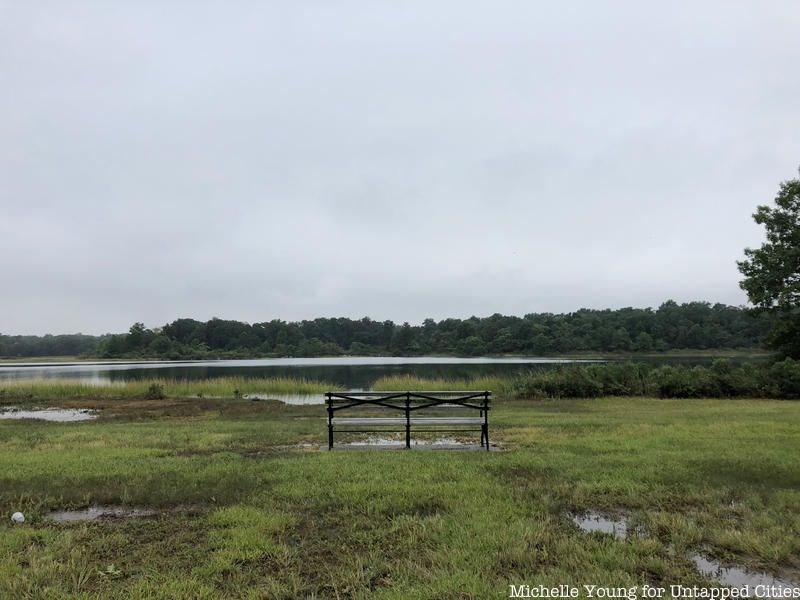
Pelham Bay Park in the northeast section of the Bronx is a lesser-known park, created by the NYC Parks Department and renovated extensively by Former Parks Commissioner Robert Moses, who is responsible for the creation of Orchard Beach and other additions. It is the largest public park in the city at 2,772 acres, about three times the size of Central Park. The park was the site of the Revolutionary War Battle of Pell’s Point, and Anne Hutchinson, a Puritan spiritual advisor, was killed by Native Americans the park’s Split Rock. The park is also home to three preserves on Forever Wild’s list: Hunter Island Marine Sanctuary, Thomas Pell Wildlife Refuge, and Pelham Bay Park Preserves.
The Hunter Island Marine Sanctuary is located north of Orchard Beach as well as a number of small islands like Cat Briar Island and the Twin Islands. The sanctuary is known for its glacial erratics, boulders deposited during the last Ice Age nearly 15,000 years ago. A rare intertidal marine ecosystem flourishes at the sanctuary. A local law was signed in 1967 to create sanctuaries like this one after New York City began landfill operations at nearby Tallapoosa Point.
The Thomas Pell Wildlife Refuge consists of a forest and salt marsh named for Thomas Pell, an English-born physician who bought the area known as Pelham in 1654 from the Siwanoy Native American tribe. His family is the second namesake of the Bartow-Pell Mansion in the northern part of the park. The refuge contains Goose Creek Marsh as well as the aforementioned Split Rock, and it is home to wildlife like raccoons, egrets, and even the occasional coyote.
The Pelham Bay Park Preserves links the Thomas Pell Wildlife Refuge and Hunter Island Marine Sanctuary. With 200 acres of salt marsh, the park has the largest area of tidal wetlands in NYC outside of Jamaica Bay. The preserves boast over 400 species of birds, mammals, reptiles, amphibians, fish, and insects; notable animals include northern diamondback terrapins and the clapper rail.
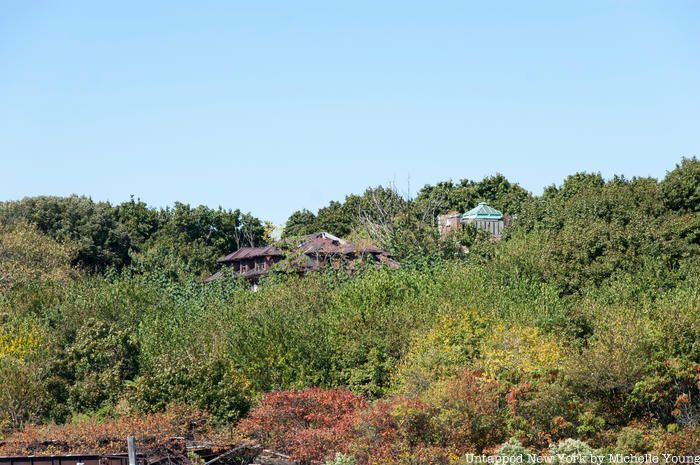
North Brother Island and South Brother Island are two of the city’s best-kept secrets; Typhoid Mary spent the last 23 years of her life on North Brother Island at a now-defunct infectious disease hospital. North Brother Island was also the site of the wreck of the General Slocum, which killed over 1,000 people. South Brother Island served as one of the city’s first dumps, yet it would later become the summer home of brewery magnate and early owner of the New York Yankees Jacob Ruppert. Many ruins like the ferry dock and Caretaker’s House still remain on the islands, as well as a heron preserve that is on the Forever Wild list.
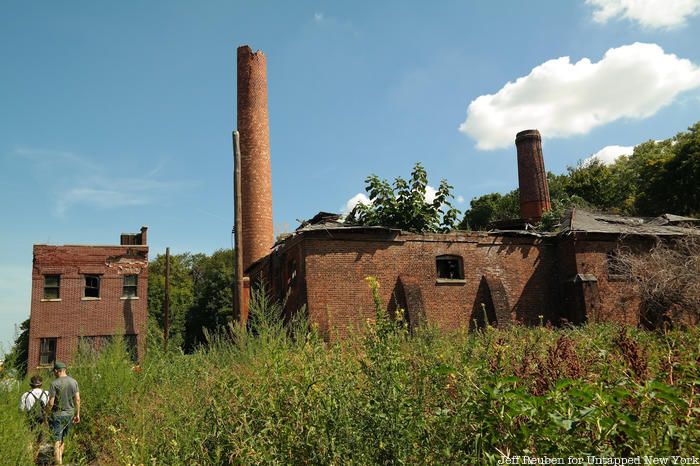
The North Brother/South Brother Harbor Heron Islands are part of a larger complex of uninhabited islands and expansive marshes where many shorebirds reside. Colonial wading birds like herons and cormorants congregate at the islands each spring, secluded from human civilization. There has been a recent decline in the bird population around New York Harbor, but organizations like the New York City Audubon Society visit the islands each spring to quantify the number of birds and eggs. For the public, the best way to see North Brother is by boat but you might get lucky on an NYC Parks kayak trip — they occasionally make stops on the island.
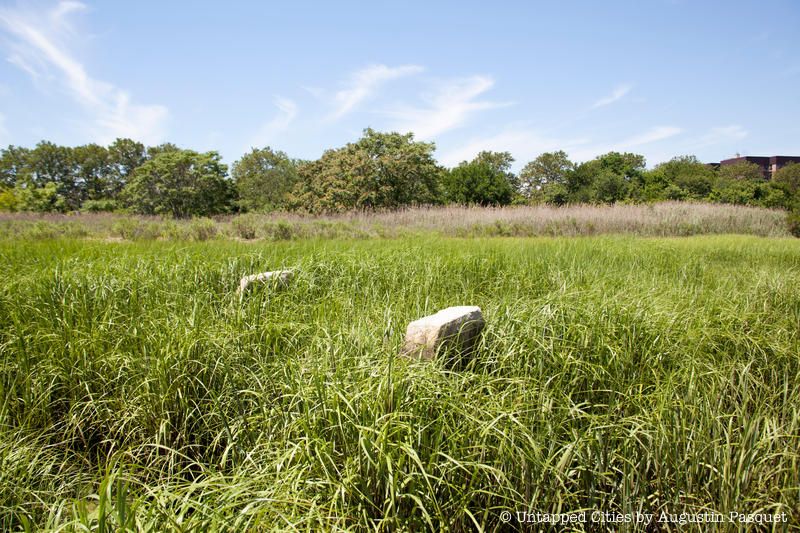
Marine Park is Brooklyn’s largest park, located on the borough’s southern shore. Marine Park is also the name of the surrounding neighborhood, home of the wonderfully preserved Golden Gate Fancy Fruits and Vegetables shop, whose owner John Cortese passed away in 2020, and the historic Lott House. The area is home to Gerritsen Creek, which housed a grist mill built in the mid-1600s, and Dead Horse Bay. The Marine Park Preserve, a Forever Wild location, sits near the man-made Mau Mau Island, and a plan to create a grand park on the shore won the silver medal at the 1939 Olympics in Berlin when the event had a town planning competition.
The preserve consists primarily of salt marshes by Gerritsen Creek, the westernmost freshwater inlet of Jamaica Bay. The bay is known for over 325 species of birds, specifically waterfowl, and 50 butterfly species. The preserve is a prime habitat for ospreys, as well as species like cotton-tailed rabbits and ring-necked pheasants. In addition to salt marshes, the preserve also houses sand dunes and meadows filled with wildflowers.
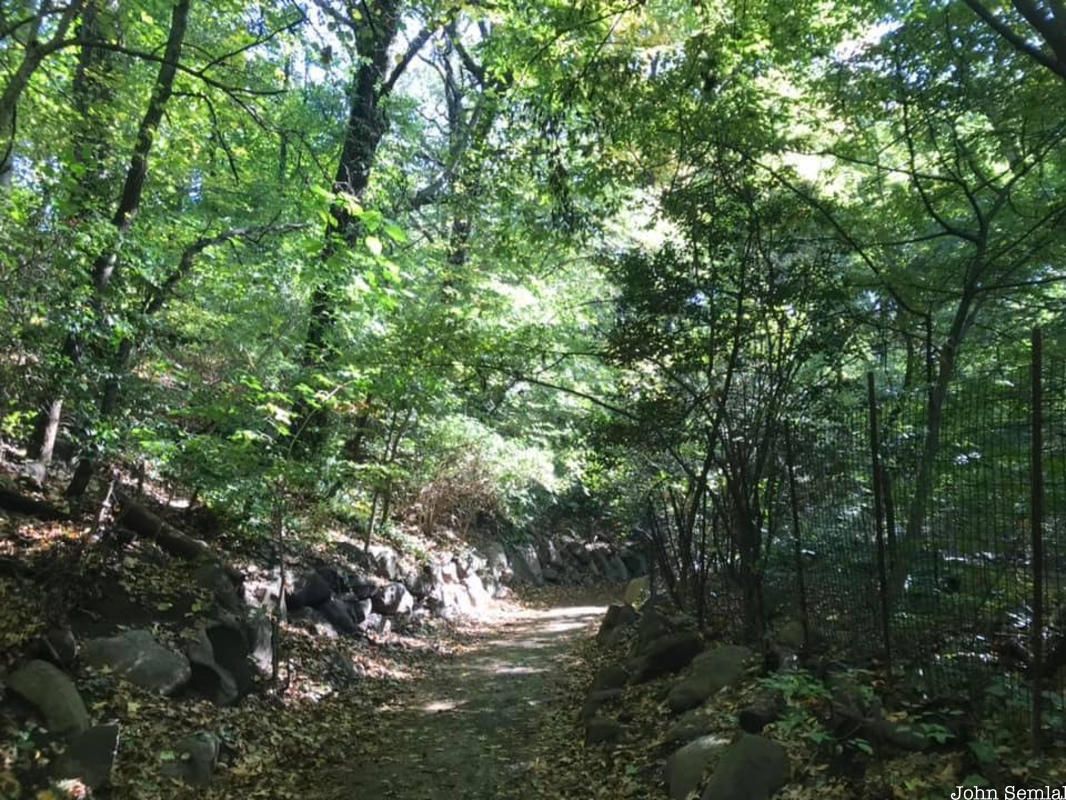
Prospect Park Forest
Perhaps Brooklyn’s best known park, Prospect Park was constructed by landscaping masterminds Frederick Law Olmsted and Calvert Vaux, the designers of Central Park. The park officially opened in 1867, and construction continued for three decades after. Grand Army Plaza, the main entrance of the park, has served as a symbol of freedom since its creation, with numerous Civil War monuments like the Soldiers’ and Sailor’s Arch. Throughout the park are remnants of the Revolutionary War from the Battle of Long Island, a Quaker cemetery, and The Lefferts Homestead, built in 1783.
Few visitors know that Prospect Park is home to a nature preserve, Brooklyn’s only forest, centered around the Ravine, . Olmstead and Vaux incorporated two areas of existing forest, as well as wetlands, into their design, and today the Ravine serves as one of Brooklyn’s five Forever Wild preserves. The Ravine is located on a moraine and consists of small hills and kettles, small depressions formed by retreating glaciers. Calvert and Vaux actually planted evergreen trees to mimic the Adirondacks, but most of them died since the park’s construction. With fertile, moist soil, the Ravine is home to trees like oaks, sweet gums, and Norway maples.
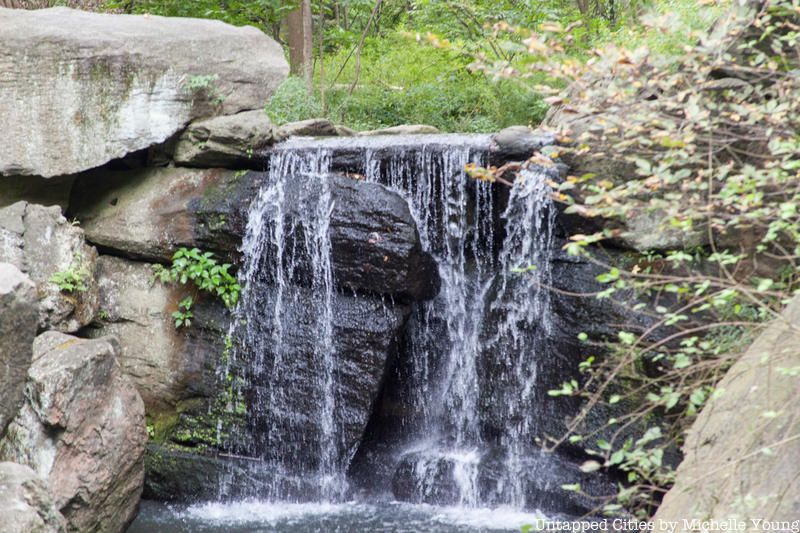
Central Park, perhaps New York’s most famous park, is home to public art, monuments honoring authors, historic figures, and musicians (but no real women!), and plenty of walkways and nature trails. Central Park is home to a number of secrets like Seneca Village, one of the country’s first free African-American villages, a survey bolt from 1811 when the Manhattan grid was first planned, and the ruins of the 1842 Academy of Mount St. Vincent. The park is also home to two of Manhattan’s four Forever Wild preserves: The Ramble and The North Woods.

Steps going into the Ramble Cave
The Ramble is a 36-acre woodland in the middle of the park with winding paths and plenty of natural features. The Ramble is home to The Ramble Cave, created from a natural cave discovered during park construction. The cave was also the site of several crimes and at least one suicide, and it became so dangerous to maintain that it was sealed at both ends. The Ramble was once known as the “Fruited Plain” since it was a very popular spot for gay men to meet during the 1920s. Over 230 bird species have also been spotted here, and other sites in The Ramble include a stream called The Gill, Iphigene’s Walk, and the Stone Arch.
The North Woods in the northwest corner of Central Park is a 40-acre preserve reminiscent of the Adirondacks, far from any skyscrapers. A notable site of the North Woods is the Ravine, a forest retreat with a stream called the Loch that cascades into small waterfalls. The North Woods also features the quaint Huddlestone and Glen Span stone arches, as well as Central Park’s oldest building, the Blockhouse, built during the War of 1812.
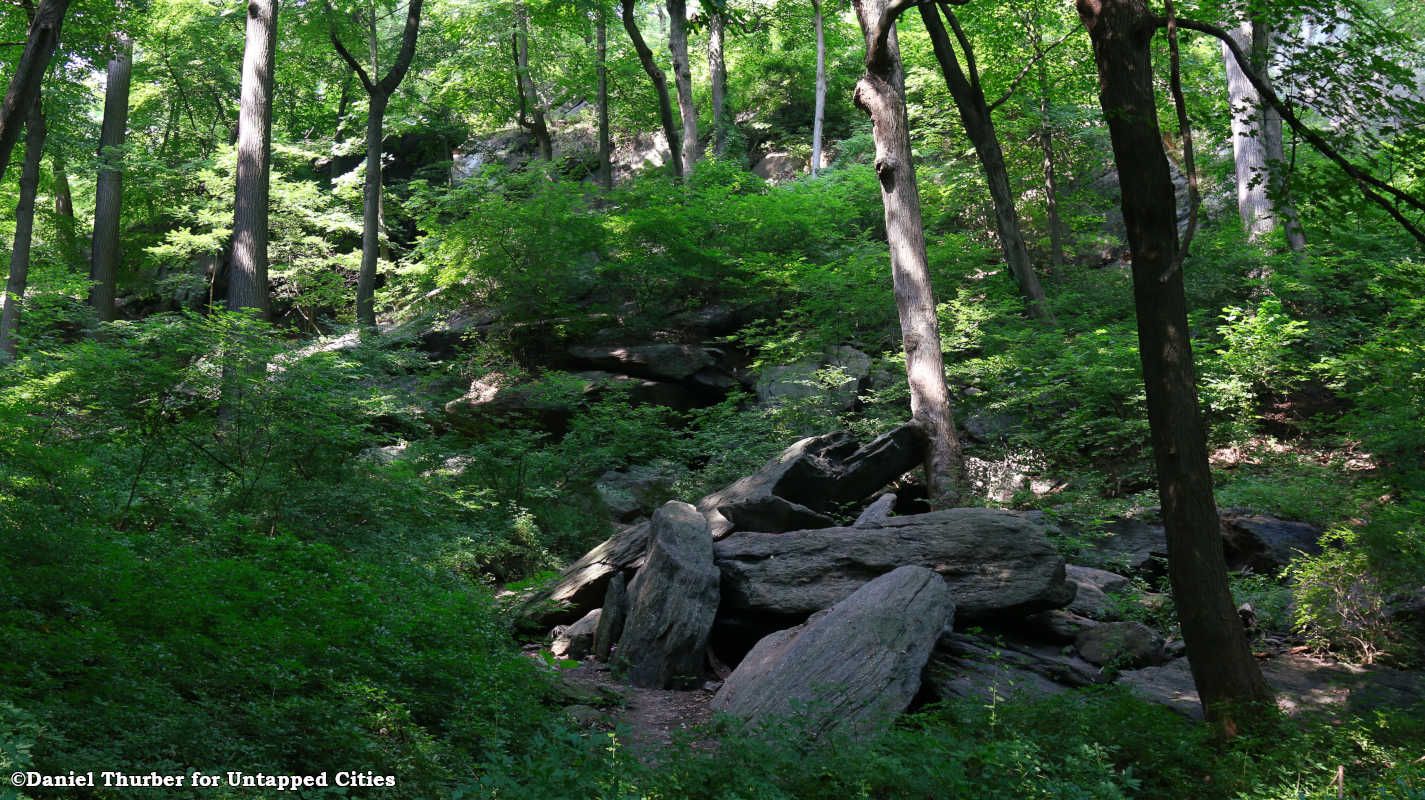
Inwood Hill Park
Inwood Hill Park on the northern tip of Manhattan is one of the island’s only retreats from steel and concrete, as it contains the last natural forest in Manhattan. Peter Minuit supposedly purchased Manhattan from the Lenape under a tulip tree in Inwood Hill Park, and the park used to be home to Fort Cockhill, built by the Continental Army during the Revolutionary War. The park is situated next to an active fault, and much of the park is non-landscaped, meaning that most of its scenery is natural. Caves, ridges, and hilly trails dominate the park, and some of these caves were used as shelters by the Lenape Native Americans four centuries ago.
Inwood Hill Park contains one of Manhattan’s four Forever Wild preserves, the Shorakapok Preserve, which features salt marshes and unique glacial geological formations. The park as a whole is home to 250 species of trees and flowers, as well as 150 species of birds and organisms like salamanders and flying squirrels. The preserve is home to the last remaining salt marsh on Manhattan island, attracting birds like blue herons and belted kingfishers. The Clove is a rich valley between two rock ridges in the preserve, covered with wildflowers in the spring. The Parks Department’s Natural Resources Group has been instrumental in preserving Shorakapok, which has been subject to erosion and flash flooding, by helping remove invasive species and prevent soil erosion.
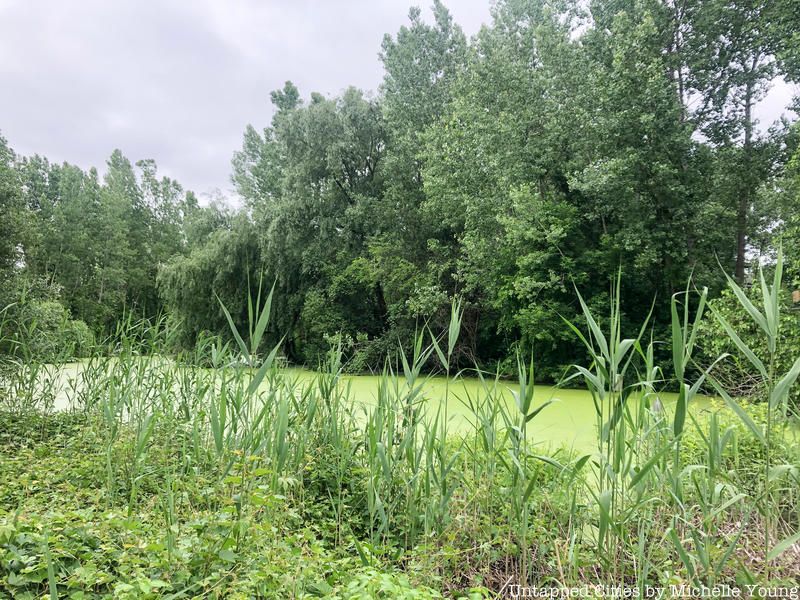 Alley Pond Park
Alley Pond Park
Spanning 655 acres, Alley Pond Park in Queens is one of the borough’s best-preserved parks. It is considered one of the city’s most ecologically diverse parks, and it was home to the first nature trail in the city, founded in 1935. The park is home to “the Queens Giant,” the oldest and tallest tree in New York City believed to be over 450 years old, and a historic windmill. There have been many concerns recently that the park’s shoreline is eroding, yet conservation efforts are underway to clear away debris and combat erosion. Today, the park hosts the city’s first challenge adventure course, in a vein similar to Kiddy City, an amusement park in Alley Pond Park that was destroyed in 1964.
The Alley Pond Park Preserve is a mix of forests, salt marsh, and freshwater wetland. The park lies on a glacier-formed moraine with features like kettle ponds, and the preserve is considered one of the most ecologically diverse since it hosts both a freshwater and saltwater environment from Little Neck Bay. The preserve and park get their names from The Alley, an 18th-century commercial and manufacturing center formerly located at the park. Rare plants like bloodroot and Christmas fern are found at the preserve in addition to two-lined salamanders and wood frogs.
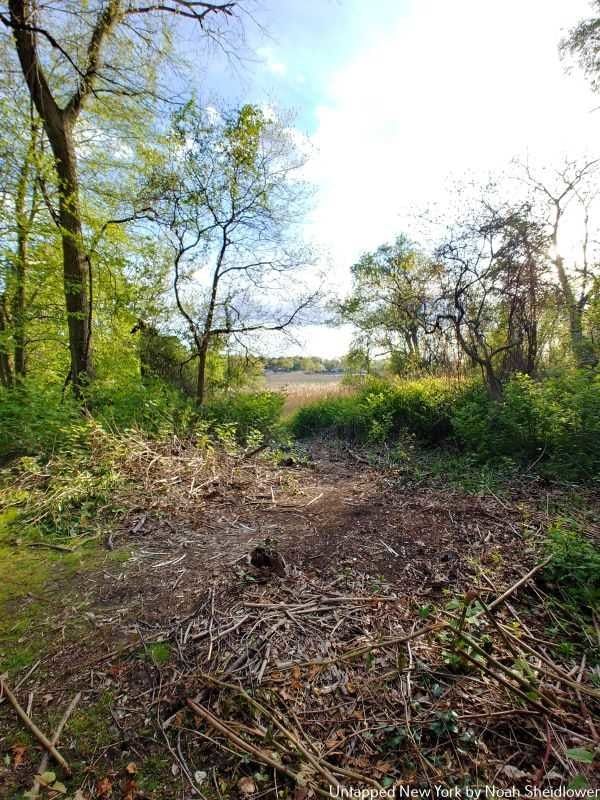
Udalls Cove Park Preserve as seen from Great Neck
Udalls Cove Park Preserve is perhaps one of Queens’ best-kept secrets. The 31-acre marshland and wetland area is situated between Douglaston and Little Neck Bay and can be easily seen from Great Neck in Nassau County. The preserve was formed in 1972 to preserve the habitats of northeastern Queens, and the area features an oblong ravine with plenty of wildlife.
The salt marshes are home to clapper rails, snowy egrets, and osprey, while Aurora Pond in the middle of the preserve houses dragonflies and wood ducks. The preserve’s tall reeds can be seen from the Douglaston peninsula and along Northern Boulevard, and the preserve also features rather obscure walking trails.
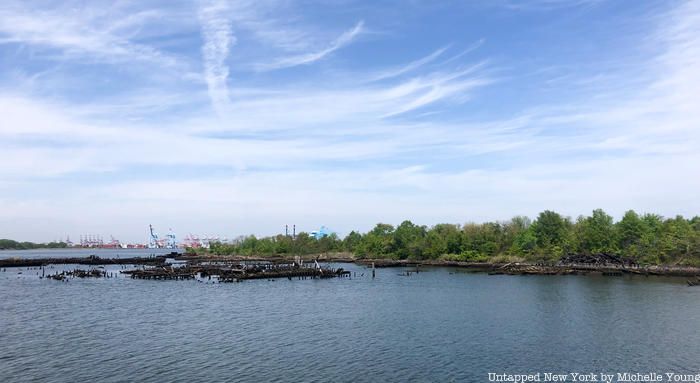 Shooter’s Island off of Staten Island
Shooter’s Island off of Staten Island
Shooter’s Island is an abandoned island off of Staten Island between Newark Bay and the Kill Van Kull. The island began as a hunting preserve for wild geese during the Colonial era, and the island was used by George Washington as a drop-off point for messages from spies. The island was once the site of Shooter’s Island Petroleum Refining and Storage Company and the Townsend-Downey Shipbuilding Company, the latter of which built a racing yacht for Kaiser Wilhelm II, the emperor of Germany. The island became a polluted junkyard after World War I, yet as a result of the Clean Water Act of 1972, avian life began to return to the island, and nowadays The New York Audubon Society manages wildlife research there. The island is also split between New York and New Jersey; of the island’s 43 acres, Bayonne owns 7.5 acres and Elizabeth owns 1.5 acres.
The preserve is home to at least 43 species of birds, and seven species of wading birds breed on the island yearly. The island is currently closed to the public to preserve its natural habitat for these birds, yet scientists and government employees often visit the island. Birds found on the island include the glossy ibis and the black-crowned and yellow-crowned night herons. Populations of hard-shelled clams are increasing as a result of improved water quality and decreased shellfish harvesting.
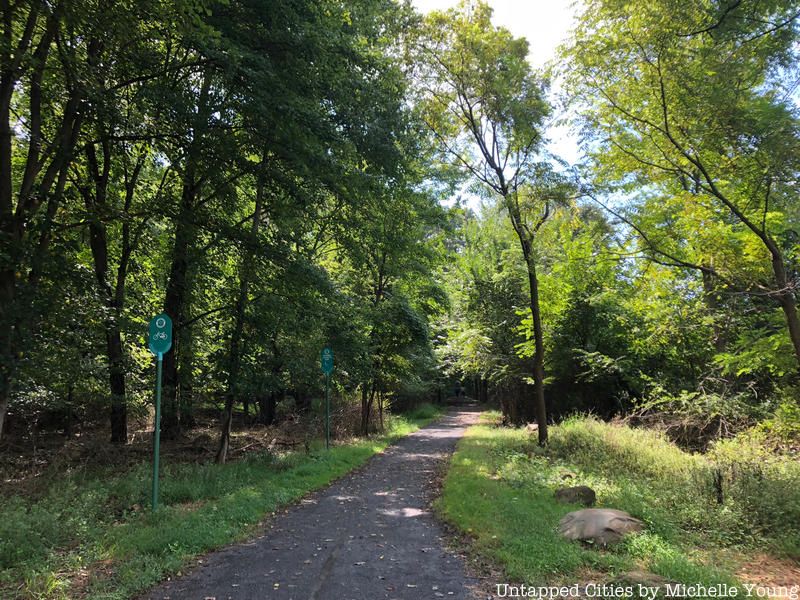
Staten Island Greenbelt
The Staten Island Greenbelt is the second largest park in New York City at 2,316 acres, connecting parks and trails that form a massive belt around the middle of Staten Island. The Greenbelt includes parks like High Rock Park, LaTourette Park, and the William T. Davis Wildlife Refuge. Staten Island residents fought for over two decades to establish the Greenbelt, fearing that infrastructure development like the Verrazano-Narrows Bridge would disrupt the island’s natural habitats. Despite these concerns, the Greenbelt includes a site called Moses’ Mountain named after Robert Moses, who notably opposed the construction of the Greenbelt.
Today, the Greenbelt is home to a namesake Preserve as well as the William T. Davis Wildlife Refuge. The Staten Island Greenbelt Preserve is a mix of forest, grassland, saltwater marsh, and freshwater wetland, making it one of the most diverse preserves in New York City. Many amphibian species reside along the many small wetlands, while forests range from oak to red maple-sweetgum swamp. The William T. Davis Wildlife Refuge consists of a similar diverse topographic makeup, with over 117 bird species like the sharp-tailed sparrow and rough-legged hawks. The refuge now makes up 428 acres with organisms like snapping turtles and muskrats roaming throughout.
See the full list of Forever Wild Nature Preserves in NYC. Next, check out Art While You Walk in the Sculpture Gardens in NYC!
Subscribe to our newsletter